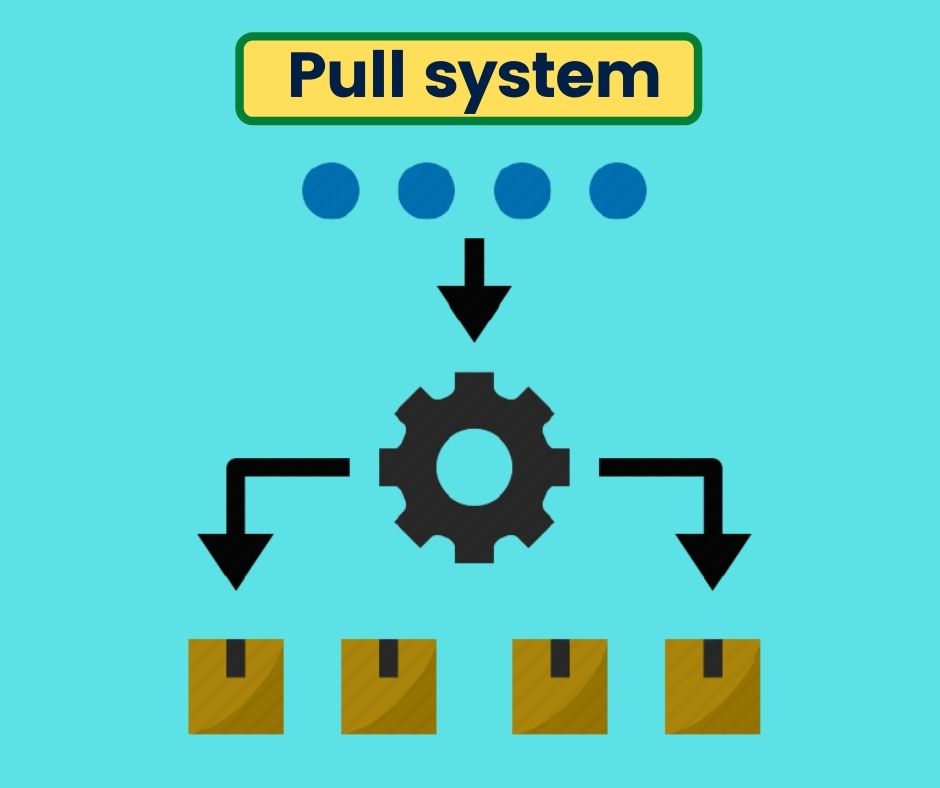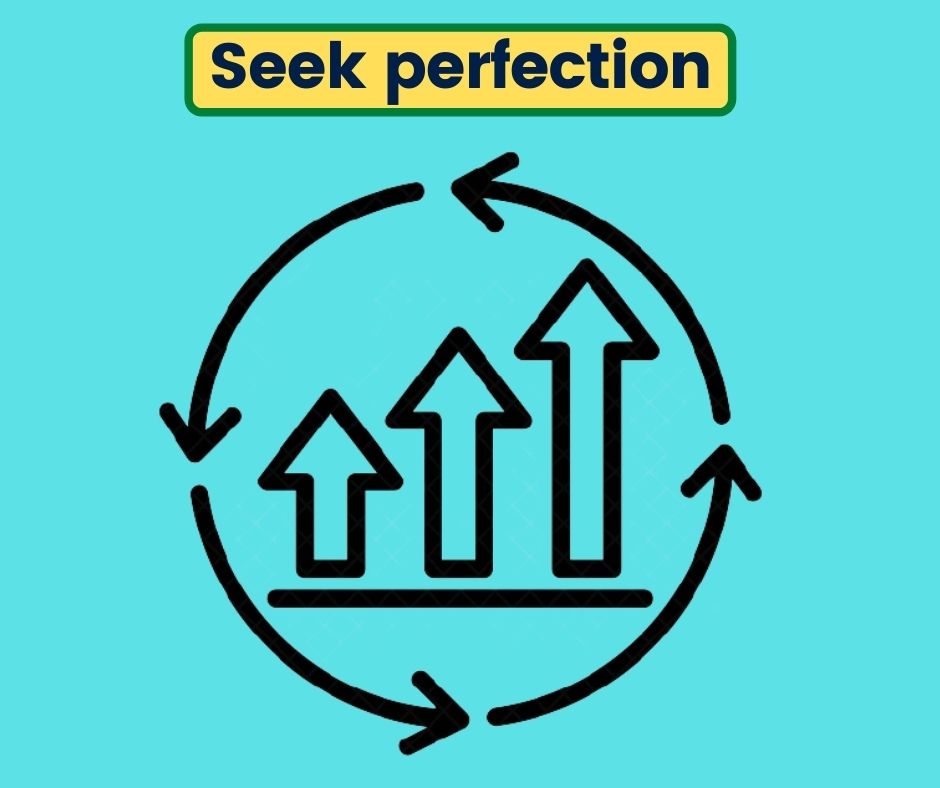5 principles of Lean are the foundation of Lean manufacturing. This methodology is recognized as one of the most powerful process improvement methodologies all over the world and is used in all types of industries to eliminate waste and improve process efficiency.
In 1996, James Womack and Daniel T. Jones defined these 5 principles of Lean for the first time in their popular book “Lean Thinking: Banish Waste and Create Wealth in Your Corporations” After that these principles became popularized as Lean thinking.
Lean thinking is all about the powerful thought process for guiding the implementation of lean techniques to make processes efficient. It focuses on providing the best possible value to the customers by removing non-value-added activities from the process.
In this article, we are going to understand the foundation of Lean thinking i.e. 5 principles of Lean manufacturing to increase process efficiency in detail.
In the end, you will understand why Lean thinking is best to adopt by any organization when it comes to providing value to the customers. So let’s start…
Check out –What is Lean manufacturing? Complete guide for 2021
What are the 5 principles of Lean manufacturing?
Lean is not just the usage of a few techniques or processes but a journey in itself that takes a holistic view of the organization and involves various phases that make use of various techniques and processes. The process for Lean manufacturing involves the following steps –
- Define the value from the customer’s perspective
- Map the value stream
- Create flow by removing causes of waste.
- Create pull if the flow is difficult to achieve.
- Measure and validate.
- Practice continuous improvements.
The ultimate aim of Lean manufacturing is all about the elimination of waste in all forms at the workplace. So applying these principles of Lean at the workplace has the potential for improved profitability as well as customer satisfaction.
Lean principles focuses on creating more value for customers with fewer resources.
When these principles are applied correctly, it can create huge improvements in the overall efficiency of the organization, cycle time reduction, time and cost savings, also increase productivity at the workplace. Now let’s see those principles one by one.

Identifying value –
- Identifying value should always start with the customer, to whom you ship the product or service, or the downstream process customers. If an activity doesn’t add value for a customer then it’s a sign that the process needs to be improved.
- Identifying value is important as it defines the direction of the organization. Value is nothing but understanding customer needs, requirements, or expectations for a specific product or process.
- Examples of activities that don’t add value include wasted movement, rework, or extra inspection time because you don’t trust the process to get it right the first time.

- Then think about what it is that creates value in the process or product. A good way to do this is to look at it from the customer’s point of view to see what they perceive as value and then try to determine what brings the most value to the organization.
- To identify value from the customer’s point of view companies use techniques like surveys, interviews, focus groups, and one-to-one discussion with customers this help companies discover what customer finds valuable. This is the 1st important principle among the 5 principles of Lean.
Value stream –
- After identifying the value the next principle of Lean is mapping the value stream or mapping all the steps and processes that are involved in the product making from 1st step i.e. raw material to the last step i.e. delivering the product to the end customer.
- In this process, the value defined by the customers is considered as a starting point, and then by using Value stream mapping, you can identify all activities that contribute to this customer-defined value.
- Generally, there are two types of activities in any process non-value added and value-added, Value stream mapping helps to identify those non-value added activities which considered as waste then project teams find ways to eliminate or reduce those activities from the process.

- Value stream mapping requires that you capture lots of data such as cost and quality data. This data gathering includes suppliers and customers as well.
- Once all the information is processed, you can decide whether any activities or processes need to be restructured in order to improve overall performance.
- This one-page value stream map gives us the flow of products or materials through the process. It also, helps us to identify all the steps in the process that do not add value to the process and then find ways to eliminate such non-value-added process steps.
- By reducing or eliminating the non-value-added activities you can ensure that customers are getting what exactly they need or expect from your company.
Create flow –
- Value stream mapping helped to remove all the non-value-added steps from the process, once it is done process becomes full of value-added steps.
- Then the next principle of lean comes up i.e. to maintain continuous and smooth process flow with no issues, interruptions, delays, or bottlenecks.
- To create a smooth process flow all the departments must come together and perform cross-functional teamwork. It takes a lot of effort during the lean implementation to maintain a smooth process flow.

- Some strategies can be used to maintain a smooth process flow like breaking down the process steps, creating cross-functional teams and departments, training employees to quickly adapt to the changes at the workplace, and making them multi-skilled.
Check out –Understanding the principle of flow in Lean manufacturing
Establish pull system –
- As per 8 waste in Lean manufacturing, Inventory is one of the worst forms of waste because it disturbs the smooth flow of the process, and excess inventory may cause hidden defects in the process. So 4th principle of Lean focuses on limiting this inventory by establishing a Pull system.
- Pull system helps organizations limit the excess inventory flow in between operations and also ensures that required material and important information are available for a smooth flow of work.

- The idea of a pull system is that instead of pushing inventory through planning into the system, it allows the customer to trigger a pull-through of inventory or information to support downstream processes based on consumption.
- In simple words, pull systems are created from the needs of the end customers. By doing that, we can reduce and eliminate wait time that’s associated with traditional process planning, which will lead to minimal inventory being required. Hence this saves a lot of monetary investment.
Seek perfection –
- The 4 principles we discussed earlier focus on waste elimination and then comes the 5th principle of Lean which is all about making continuous improvements in company culture.
- A dedication to continuous improvement is absolutely critical in the practice of Lean. All the organizations would quickly agree that from a safety perspective, the only acceptable goal for safety would be Zero injuries, deaths, lost time, and accidents.

- We need to have the same attitude towards waste and defects in the processes. Well, perfection is an illusion but lean thinking emphasizes that we should be committed to achieving perfection and continuous improvement to drive perfection.
- It is also important that the customer’s voice is heard regarding the elimination of waste and determining what value means. This is the last but most important principle, which emphasizes that a company should become a learning organization and find ways to get better every day.
Check out – Understand the 8 waste in Lean manufacturing with examples and ways to eliminate this.
These are the 5 important principles of Lean manufacturing which provide the ways that we can make organizations efficient as well as effective. It allows managers as well as those who work close to the processes to be the problem-solvers.
Allows them to discover problems in the processes and solve those problems in order to deliver better value to the customers.
So by applying these principles organizations can increase the value delivered to the customers as well as their profitability simultaneously by reducing the overall cost of doing business.
Conclusion –
5 principles of Lean are the core foundation of Lean thinking, in this article, we understood each principle in detail and how applying these principles helps organizations to stay ahead in the competition.
The focus of these principles of lean is to make the organization waste-free and adopt a continuous improvement culture. (Check out – Lean Six Sigma With Minitab Live Training Program and Certification)
If you found the article useful then please share it in your network as well as subscribe to get more such articles every week.






Great Summary of focused articles, practical application implementation.
Pingback: What is 5s in Lean? Understand in detail
Pingback: How Poka Yoke can help you prevent mistakes? Mistake Proofing
Pingback: What is 5s in Lean? Complete guide for 2023
Pingback: 14 Principles of Management Every Manager Should Know